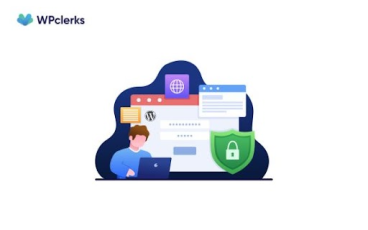In the currently dynamic world of web development, WordPress stands out as an essential foundation for millions of websites. Currently, it seems that WordPress has become the heart of the internet, ranging from blogs of individual users to big online stores. But with this prevalence comes the obligation to make your WordPress site secure, updated, and, above all, backed up in case of force majeure. This is where the necessity of having a proper WordPress backup and restore plan comes into play.
It is important to note that a properly and efficiently designed backup and restore plan is not so much an insurance policy but a necessity when it comes to properly managing a website. It stands as your final protection against a host of problems that can happen to your computer, from bad hardware to bad users, from bad software to bad bugs and bad guys. Therefore, when the best practices for WordPress backup and restore have been adopted, you are safeguarding your data and assets while at the same time providing business and personal guarantees and relief.
Understanding the Importance of WordPress Backups
It is impossible to overemphasize the importance of having a backup for your WordPress site, or better still, a backup performed on a regular basis. In an ideal world, your website should be up and running and free from any glitches, but this is not always the case. Suddenly, hardware may fail sometimes, though this is not very frequent with the current technologies. Just imagine how your site may get erased in a few hours due to a server breakdown, a hard disk failure, and many more. Despite the fact that most quality hosting providers use multiple storage systems and their data is backed up, the loss of data can occur due to the failure of the specific hardware.
Another important issue that makes the backup important is human error. In as much as we are website administrators or developers, we are equally capable of making mistakes. A small mistake in the configuration of the environment, a file that was deleted by mistake or permissions that were not set correctly can cause a lot of problems with the functionality of your site. A recent backup enables you to switch to a workable version of your site, hence reducing the time spent and the level of frustration.
Another risk is software-related issues and, in particular, the updates incompatibility can become a problem. WordPress has a rich number of themes and plugins numbering in thousands. On one hand, such diversity is one of WordPress’s primary advantages, but it also complicates compatibility concerns. The latest version of WordPress, a theme, or a plugin may not be compatible with the combination of settings that you have chosen. In such cases, having a backup of your site before the update can be a lifesaver, allowing you to roll back to a functional state while you troubleshoot the issue.
Security breaches and hacking attempts are now more complex and more frequently experienced. Essentially, no website is immune to attacks, regardless of whether it is a large company website or just a small personal blog. A good backup strategy is the last line of defence against such threats, as it embraces all your applications. You can revert your site to a virgin state, which is free from any traces of the attack and, thus, minimize the effects of the security violation.
Key Components of an Effective WordPress Backup Strategy
An effective WordPress backup plan includes several essential components that make up the most effective backup solution for your website.
Originally, your backup plan should always entail full-site backups. This means that you do not back up only your database that contains your posts, pages, and settings but also the file system, which includes; themes, plugins and the uploaded media. By having partial backups it means that you will only have selected sections of your site backed up; this is dangerous in the event of total site failure.
Another important aspect that relates to the backup plan is the scheduling. Manual backups are still better than having no backups at all, but as the name suggests, it involves a human being, and as we know, humans are also capable of forgetting things, not to mention negligence. Automatic and periodic backups provide added security to a site with little to no input needed from the user. The frequency of these backups should, therefore, be according to the rates at which your site is updated, as well as the severity of the contents posted therein. For the sites that are updated often or for the sites such as e-commerce sites, daily or even real-time backups might be required.
Security measures should be considered as an element of the backup procedure. Encryption of backup files is an important consideration since the files contain vital information that should not be accessible by any unauthorized personnel. Furthermore, integrating malware scans into the backup procedure will assist in identifying and excluding the backup of infected files, thus making the recovery points contained in the backups safe for usage.
It is perhaps for this reason that incremental or differential backups are useful where there is a large website. These are more efficient because these only back up changes made since the last backup, and thus, storage space and backup time are minimized. This is helpful because it means that more backups can be done without significantly stressing the server or storage space.
Offsite storage is one of the mechanisms that should not be overlooked when designing the disaster recovery plan. The best way to store your backups is to save them on the same server that hosts your website; disaster strikes, and your server crashes or gets hacked. Using Amazon S3, Google Drive, or Dropbox for your backups guarantees that your information is kept in another area to avoid problems that may impact the main hosting environment.
Comparing Backup Methods: Plugins vs. Server-Side Solutions
When it comes to implementing a WordPress backup strategy, you generally have two main options: by employing WordPress backup plugins or by going for server backup options. Each of them has its own benefits, and it’s important to consider its pros and cons while choosing the method, your level of programming skills, and the hosting environment.
WordPress Backup Plugins
WordPress backup plugins are easier to use than command-line tools because they blend well with the WordPress admin panel. It is relatively simple to install and set them up, and they are also quite simple to use, especially for users who are not very familiar with server operations. Features that might be included with plugins are scheduling, selective backup and options to integrate with the most popular cloud storage services. They function within the WordPress environment and that is why they can function in any hosting environment since they do not need root access.
Nevertheless, plugin-based backups come with their own disadvantages. They may affect the performance of your site, mainly during the backup operations, since they rely on WordPress resources to work. There is also a factor that if WordPress itself is hacked, then your backup solution also becomes a problem. It is also important not to store your WordPress backups in your WordPress directory because this will only lead to large installations, in case you are not careful with the older copies of backups.
Server-Side Backups
Server-side backup solutions work at a lower level compared to WordPress. This way results in faster and more efficient backups that do not increase the load on your WordPress site even more. It is more detailed as compared to the backups of only WordPress files because server side backups also contain server configurations and other things which might be necessary in case of a full site restoration. They also are generally more reliable, meaning they can operate if WordPress itself is down or contains corrupted code.
The main disadvantage of server-side backups is that they may be somewhat more complicated to install and control. They may include the use of command prompt, scripting or knowledge of the management of servers. But today, many hosting providers have made it very easy for users to handle server-side backups, and hence, this option is quite friendly to the users.
Popular WordPress Backup Plugins and Their Features
1. UpdraftPlus
UpdraftPlus is among the most extensive backup tools on the market and potentially the best one. This one is also free of charge and has a paid version as well; you can schedule the backups, store them offsite and the most important thing is that you can easily restore your site. UpdraftPlus offers the incremental backup feature and offers an option to select the parts of the site to be backed up depending on the situation.
2. VaultPress
VaultPress is a paid service by Automattic, which uses the subscription model and is deeply linked with WordPress. It gives real-time backup, self-copying, and I.T. features such as virus detection, etc. VaultPress is also very easy to use and is very dependable which is the reason why many users prefer it for backup without having to worry so much about it.
3. BackWPup
The BackWPup plugin is another one that provides a set of features in both the free and the paid version. It also provides compatibility with multiple storage types, such as cloud services and FTP, as well as the ability to make a full backup of the site, including the databases. The scheduling and the ability to perform backups through the WordPress cron or by going to the plugin and doing it manually is what made BackWPup versatile.
4. Solid Backups (previously Backupbuddy)
Solid Backups is one of the best plugins for backing up your WordPress site, with such features as real time backup, malware detection and site transfer tools. It is famous for its GUI and powerful support, and it is popular with WP specialists and web agencies working with numerous sites.
Server-Side Backup Options and Considerations
If you are interested in server-side backup solutions, there are a number of choices depending on the hosting environment and your level of coding comfort. Most of the managed WordPress hosting services, including Wetopi, provide backup services as a component of their packages. These may include daily automatic backups, the physical storage of the backups and the ability to easily restore them through an interface. Such solutions work like server-side backups but have the usability of plugins, which are usually more convenient.
If you are a user with cPanel or any other similar hosting control panel, then there is usually an in-built backup option available. These enable you to make and work with copies of all your hosting accounts, files, WordPress included and the database. Although these tools can be very useful, they are slightly more complicated and may take some programming knowledge to operate.
The backup management on Linux can even be more controlled by using customized scripts for the advanced users. The advantage of this approach is that it provides the maximum flexibility of the backup process so that you can configure it according to your needs. It is possible to write scripts that make a copy of the files and the database, compress and encrypt the copy, and then send this copy to the remote storage whether it is local or offsite, automatically. However, this method is very technical and needs constant updates and maintenance for the scripts to be efficient and secure.
Best Practices for WordPress Backup and Restore
Thus, regardless of the method that you decide to implement, there are several guidelines that will help you get the most out of your WordPress backup and restore plan. First, it is essential to note that before implementing any crucial changes, you should always have a backup of your website. This covers WordPress core updates as well as themes and plugin updates or even any major update in content or design. This is especially important to have a clean and more recent backup especially when performing updates or modifications on the database.
An essential aspect that many people don’t consider is the need to perform regular tests of the backups that you have in place. Just creating backups is not enough; you have to make sure that they are restorable when required. Sometimes, it is necessary to test restored backups in a staging environment or local development environment to make sure that all files are restored properly. This way not only ensures that the backups are functional but it also helps to practice the restore process, which can be highly useful during a disaster.
There is no situation where you should directly restore backups without first directing them to a staging environment. This lets you confirm that the backup is good and free of problems before deploying alterations to a production environment. Fortunately, most of the hosting providers include features of staging environments in their services, and therefore this is not a big issue. If no staging environment is possible, it can be used as a temporary subdomain or the local environment for testing.
Another of such is the need to keep up with backup redundancy. Do not store or backup your data in only one place or media. The other approach is to devise a plan that entails having multiple copies of the same data in other regions. This could include data backups within the local server, data stored in the cloud as well as offsite physical storage for important data. The 3-2-1 backup rule is a good guideline: It is recommended to keep three or more of your data, two of which should be stored in different media, and one should be stored in a different location from the original data.
Schedule these measures and check if your backup plan corresponds to your site’s growth and its requirements. Depending on the development process of your WordPress site, your backup needs may vary in the future. An idea that was good enough for a small blog may not necessarily work for a large e-commerce business. Backup frequency, backup storage, and restore should be checked periodically relative to the current architecture of the site and the business needs of the company.
Conclusion
In the world of WordPress, where change is the norm and challenges are expected, the backup and restore solution provides the safety net. These are the best practices you should follow to protect your data – and so much more: your online persona, your operations, and your sanity.
When you back up your WordPress site, you are not only planning for the unexpected, you are future-proofing your online assets. Thus, you make sure that your WordPress site remains stable, secure, and restorable no matter what kind of challenge it has to face. As we have said before, and will say again, in the large universe of WordPress, the backup is not a mere precaution: it is a necessity that is part and parcel of the proper management of your site and, more generally, of your online strategy.
If your issue is still unresolved, don’t hesitate to get in touch with WPclerks, a WordPress support service providing company. We are available to help by taking care of your one-time tasks and WordPress Support and Maintenance quickly and easily. Forget about hours spent searching for solutions yourself.










